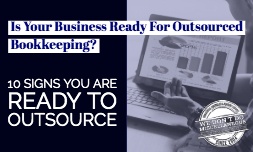A well-crafted business plan provides a roadmap for the future, but a map is only useful if you track your journey. As you move into 2026, the key to transforming your strategic goals into tangible results lies in measuring your progress.Key Performance Indicators (KPIs) are the tools that allow you to monitor the execution of your business plan, providing clear, data-driven insights into your company's performance. For business owners, financial KPIs are particularly vital, as they serve as the most direct measure of your organization's health and sustainability.
Tracking financial KPIs moves your business plan from a static document to a dynamic guide. It allows you to make informed, strategic adjustments, identify challenges before they become critical, and recognize opportunities for growth. Without consistent measurement, you are navigating your business blindfolded. This post will explore the essential financial KPIs that every business owner should monitor to ensure their 2026 plan stays on the path to success.
Why Financial KPIs Are Critical for Plan Execution
While many metrics can measure business performance, financial KPIs get to the heart of your company's viability. They provide an objective look at whether your strategies are generating the desired monetary outcomes. For small and medium-sized businesses, where resources are often tight and every decision counts, these metrics are not just helpful—they are essential for survival and growth.
By focusing on the right financial indicators, you can:
- Validate Your Strategy: Confirm that your business model and strategic initiatives are producing real financial returns.
- Improve Decision-Making: Use accurate data to make choices about resource allocation, pricing, and investments.
- Secure Stakeholder Confidence: Provide clear evidence of performance to investors, lenders, and internal teams.
- Drive Accountability: Set clear, measurable targets for your teams, fostering a culture of performance and responsibility.
Top Financial KPIs to Track in 2026
To effectively measure the success of your business plan, you must focus on a select group of high-impact KPIs. Attempting to track too many metrics can lead to confusion and a lack of focus. The following financial KPIs provide a comprehensive view of your business's performance.
1. Revenue Growth Rate
Revenue growth is one of the most fundamental indicators of business health and market acceptance. It shows how quickly your company is increasing its sales over a specific period. A positive growth rate indicates that your sales and marketing strategies are effective and that there is demand for your products or services.
- How to Track It: Calculate the percentage increase in revenue between two periods (e.g., quarter-over-quarter or year-over-year).
- Why It Matters for Your Plan: This KPI directly measures the success of your growth initiatives. If your 2026 plan projects a 20% increase in revenue, tracking this metric monthly or quarterly will tell you if you are on target. If not, it signals the need to re-evaluate your sales tactics or market positioning.
2. Net Profit Margin
Profit, not just revenue, is the ultimate goal of any business. The net profit margin reveals what percentage of revenue is left after all expenses, including operating costs, interest, and taxes, have been paid. It is a powerful indicator of your company's overall profitability and operational efficiency.
- How to Track It: Divide your net profit by your total revenue and multiply by 100 to get a percentage.
- Why It Matters for Your Plan: A healthy profit margin shows that your pricing strategy is sound and your costs are under control. If your revenue is growing but your profit margin is shrinking, it may indicate that your cost of goods sold is too high or your operational expenses are escalating, requiring immediate attention.
3. Gross Profit Margin
While net profit margin gives a complete picture, gross profit margin offers specific insight into your production efficiency and pricing strategy. It measures the profitability of your core offerings before accounting for overhead and other indirect costs.
- How to Track It: Subtract the cost of goods sold (COGS) from your total revenue to find the gross profit. Then, divide the gross profit by total revenue.
- Why It Matters for Your Plan: This KPI helps you assess the profitability of individual products or services. A low gross margin might prompt you to look for more efficient suppliers, adjust your pricing, or streamline your production processes as outlined in your operational plan.
4. Cash Flow from Operations
Cash is the lifeblood of a business. Cash flow from operations measures the amount of cash generated by your company's regular business activities. A positive cash flow is crucial for meeting short-term obligations like payroll and inventory costs, while also funding long-term investments.
- How to Track It: This figure is typically found on your company’s statement of cash flows. It represents the net cash generated from the primary revenue-producing activities.
- Why It Matters for Your Plan: A company can be profitable on paper but fail due to poor cash flow. Tracking this KPI ensures you have enough liquid cash to run day-to-day operations and execute your strategic initiatives without disruption. It is a key indicator of your financial stability.
5. Return on Investment (ROI)
When your business plan calls for significant investments—whether in new technology, marketing campaigns, or facility expansions—you need to know if those investments are paying off. Return on Investment (ROI) measures the financial return generated from a particular investment.
- How to Track It: For a specific project, subtract the initial cost of the investment from its final value, then divide by the cost of the investment.
- Why It Matters for Your Plan: ROI helps you evaluate the effectiveness of your capital allocation decisions. It provides a clear, data-backed method for determining which initiatives are worth continuing and which should be reconsidered. This empowers you to direct future resources toward activities that deliver the highest returns, aligning with your strategic growth goals.
Turning Measurement into Action
Tracking these KPIs is only the first step. The true value comes from analyzing the data and using it to make strategic adjustments. Schedule regular reviews—monthly or quarterly—to discuss these metrics with your leadership team. Compare your actual performance against the targets set in your 2026 business plan.
If a KPI is off-track, investigate the root cause. Is revenue growth lagging due to an underperforming marketing campaign? Is your profit margin declining because of rising supply costs? By asking these questions, you can take corrective action promptly. Conversely, if you are exceeding your targets, analyze what is working so you can double down on those successful strategies.
By systematically tracking these essential financial KPIs, you empower your business to navigate 2026 with clarity and confidence. You transform your business plan from a document of intent into a powerful tool for strategic growth and lasting success.














